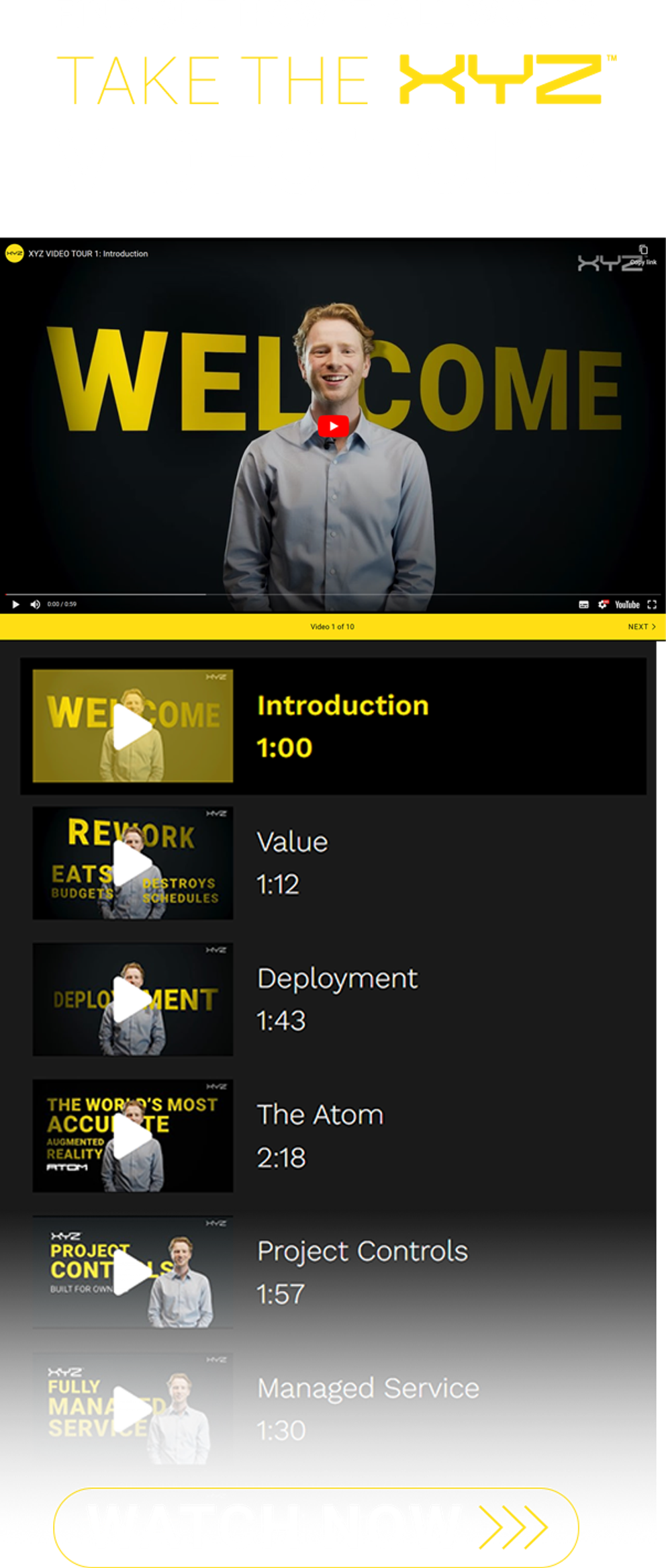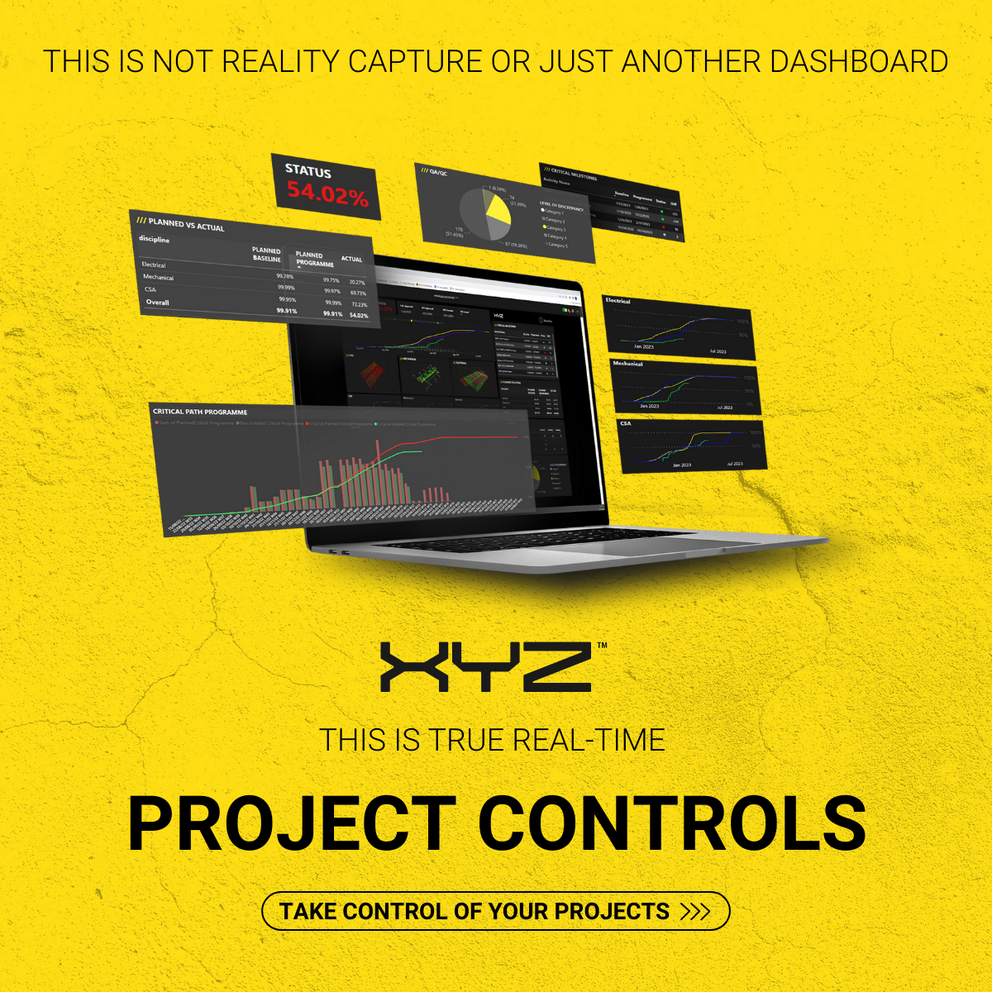-
Services
Services
Find out how we work with our clients and deliver value to construction projects from day one
-
Solutions
Solutions
Discover how all our solutions sync together to deliver construction's most powerful BIM platform to date
-
Built for
Built for
-
Industry
Industry
Understand how we support construction's biggest sectors, and hear from our clients who have experienced the power of XYZ
-
Resources
Resources
Get stuck into all our latest thought leadership, news, reports and industry leading content
-
Company
Company
Dive into what makes XYZ tick, unearth why construction is in our DNA and why we are world leaders in AR solutions

Insights
Laser scanning is costing your construction project money. Here’s why

15 July 2022
Laser scanning has the potential to streamline many aspects of quality management in construction. But does it approach validation and remediation from the wrong perspective? (YES!)
Modern technology has significantly enhanced quality control, work validation, and remediation in the construction industry. Once upon a time, manual inspections were the only way to ensure that structures were built according to plan. Naturally, amazing though the human brain may be, such analog methods present considerable drawbacks.
First, the process of manually checking every last element of a project – especially a highly complex or large-scale project – is labor intensive, slow and consequently expensive.
Second, the manual approach to post-validation is open to inconsistency. One inspector’s standards of acceptability may differ from those of the next. In fact, one inspector’s personal standards may even differ from one day to the next.
Third, even if we could imagine a world in which standards for old-school, physical site inspections could be clearly and rigorously established, the age-old issue of human error then rears its ugly head. Even the most dedicated and conscientious inspector can be prone to mistakes. Tiredness, stress, time pressures – any number of things can contribute to human-error.
For these reasons, a digital solution to an analog problem seems like the logical course of action. But, as we go on to explain, finding the right digital solution to quality control may actually require a few steps back and a fresh new perspective.
Laser scanning – why it works and why it doesn’t
If we assume that tried-and-tested approaches to construction are the best approaches, then laser scanning ticks a lot of boxes, addressing many of the pitfalls of manual inspections.
A high-end laser scanner can take a detailed and reasonably accurate reading of works completed. Processing large amounts of data far quicker than a human inspector can. This means that the time-burden of inspections can be significantly mitigated.
Moreover, so long as it is a high-quality piece of scanning equipment, laser scanners can produce a far more accurate and consistent set of results than a human inspector ever could. In theory, a laser scanner cannot ‘forget’ to take a measurement, misread a tape measure, or get its inches and centimeters mixed up.
Therefore, in a sense, laser scanning seems to solve many of the issues associated with manual inspections. It should be noted, however, that the technology has a few practical drawbacks.
The first of these relates to the way that laser scanners work. Essentially, a laser beam is fired from a fixed location, rebounds off an object and is recorded, thus logging a single point of data. When swept across a construction site, millions of these single points can be recorded and then stitched together to form a point cloud, which is a 3D representation of the site’s physical properties. Problematically, these laser signals can be compromised by intense heat, light or humidity, affecting the clarity and accuracy of the laser scanner’s readings and resulting in ‘noise’ in the data. This noise translates as fuzzy, unclear edges in the visual representation of the 3D scan and is understandably awkward when high levels of accuracy are needed for quality control purposes.
Also relating to the way that they work, laser scanners can only record data that falls within their Visual Line of Sight. In other words, if an element of the structure is obscured (be that internal ductwork and piping, or simply something that is around the corner from where the scanner is located) then it will not be recorded.
There are other shortcomings that can also be leveled at the process of laser scanning for construction purposes. For instance, the complexity of the tech and the resulting costs associated with skilling up the workforce are enough to put some people off. So too is the fact that many laser scanners are designed for various applications, including crime-scene investigation, city mapping, volumetrics and more. As we covered in a recent blog, these excess features do nothing to enhance the benefits to the contractor, but are likely to result in unnecessary and costly extra mechanics that make the systems harder to operate and more prone to glitches.
Ultimately, the amount of time it takes to scan, compile, gather, compute and identify issues can take days, if not weeks.
Rethinking remediation
All of these shortcomings pale in comparison to the one fatal issue with laser scanning. And in all fairness, this issue has more to do with broader industry customs than any specific problem with the technology itself.
Laser scanning provides a highly accurate and effective solution to a problem; the thing is, it solves the wrong problem. Or else, it approaches the problem from the wrong perspective.
Laser scanning looks at work that has been done and tells you where errors have been made, when in reality, a far more effective approach to quality management is to pre-empt and solve errors before they are made. Construction needs to shift from reactive to proactive remediation.
Thanks to XYZ Reality’s the Atom™, the world’s first Engineering Grade Augmented Reality headset for the construction sector, proactive and real-time remediation is now a possibility.
The Atom overlays a holographic representation of the latest design model onto the real-world scenery of the construction site to millimeter accuracy. With the Atom, users can see exactly where every last beam, column, lintel or screw should go and make sure everything is installed accurately at the first time of asking. Project teams can literally immerse themselves in a visual, scale rendering of the 3D model, enabling real-time, proactive validation. Users can verify, validate and approve works in a matter of seconds!
Engineering Grade AR™ has the capability to speed up the coordination and installation phases and eradicate the reactive inspection and rework phase of any project. As such, XYZ Reality’s Atom has the potential to deliver projects of a higher quality, quicker, for less.
Had Henry Ford (the man who brought automobiles to the masses) not viewed his design challenge from a different perspective, he would have sought faster horses. And much like a faster horse, laser scanning is a fine solution to a problem; you just have to ask yourself: is it the best solution?
To learn more about the ways Engineering Grade AR can help you take control with proactive remediation, get in touch with XYZ Reality and arrange a free demo today.






